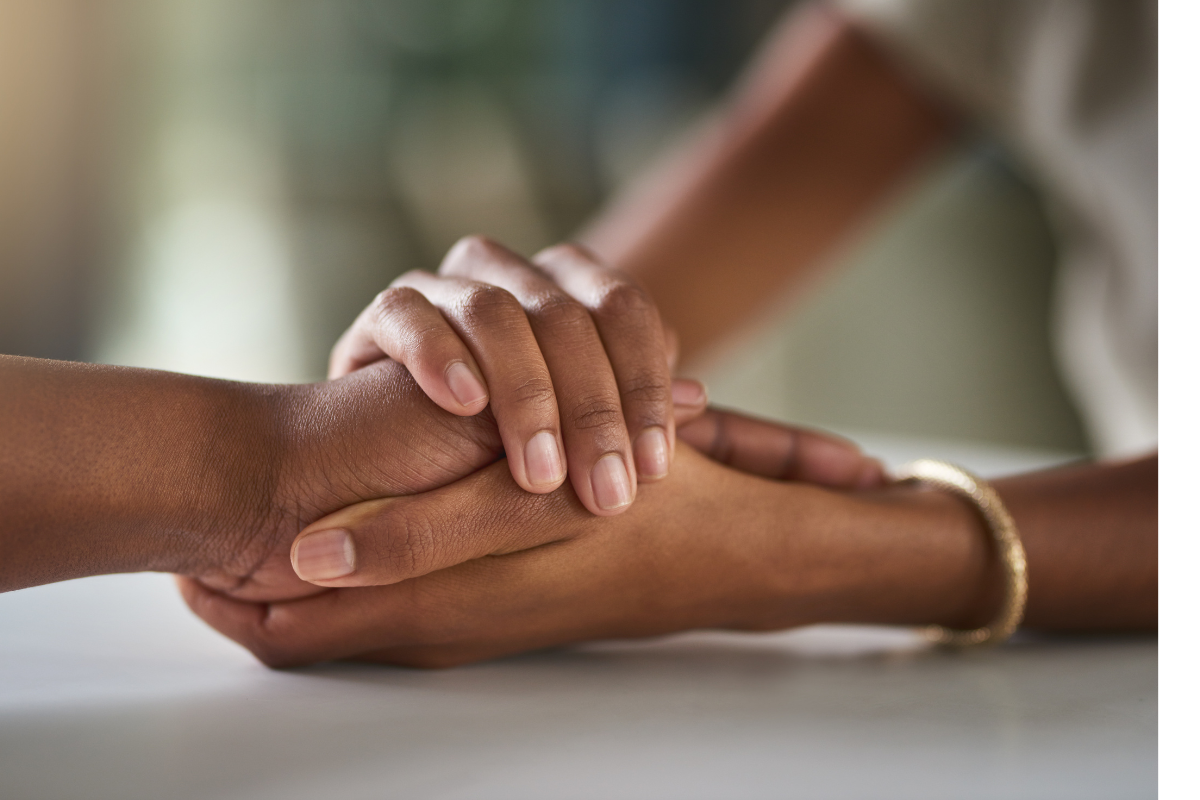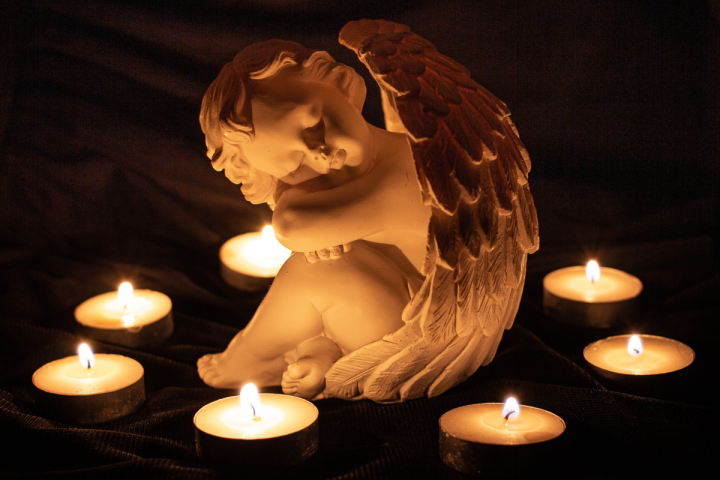by Katherine Jewett, LMFT
Losing someone to suicide is a grief unlike any other. It comes with a storm of emotions: shock, guilt, confusion, and an aching, complicated sorrow. Whether you’re a spouse, sibling, parent, friend, or extended family member, the pain of suicide loss is a wound that touches every part of life. And yet, in this unique and overwhelming grief, you are not alone.
This guide is here to offer support, understanding, and direction. From emotional validation to practical resources, it is a compassionate companion for anyone navigating life after losing a loved one to suicide.
Understanding the Unique Grief of Suicide Loss
Emotional Responses to Suicide Loss
Grief following a suicide is often layered with intense and conflicting emotions. You might feel:
- Guilt: Wondering what you could have done differently. Guilt is one of the most pervasive feelings after suicide loss. Survivors may replay conversations, moments, or decisions in their minds, believing that a different action might have prevented the outcome. It’s important to remember that suicide is a complex and often hidden struggle, and it’s not your fault.
- Anger: At your loved one, yourself, or the circumstances. Anger may feel uncomfortable, especially directed at someone you loved, but it is a normal and valid part of grief. You might be angry at your loved one for leaving, at yourself for missing the signs, or at a system that failed them. Giving space for this anger without judgment can be a healing act.
- Confusion: Struggling to make sense of the “why.” Suicide often leaves behind unanswered questions. Even with notes, conversations, or known mental health struggles, there may still be a lack of clarity that makes acceptance difficult. Survivors often find themselves searching for meaning or explanations, which is a natural part of the grieving process.
- Shame or Isolation: Feeling like you can’t talk about it openly. Because of societal stigma, many survivors feel alone in their grief. They may hesitate to share the cause of death, fearing judgment or pity. This silence can deepen the pain. Breaking through shame and finding trusted people to talk to can begin to ease this burden.
This grief can differ from other losses due to the trauma of how the death occurred, the lack of closure, and societal stigma. According to the American Foundation for Suicide Prevention, suicide loss survivors are at a higher risk for complicated grief and mental health challenges.
Common Grief Reactions
You might also experience:
- Denial or disbelief In the immediate aftermath, many survivors struggle to accept the reality of the loss. Denial can act as a temporary emotional buffer, helping us survive the initial shock. It may feel surreal, as if your loved one is just away or that the news was somehow a mistake.
- Difficulty sleeping or eating Grief affects the body, not just the heart and mind. Survivors often report disrupted sleep, nightmares, or insomnia. Eating habits may change dramatically—either a lack of appetite or overeating for comfort. These changes are signs of acute stress, and paying attention to your body’s needs is part of healing.
- Depression and anxiety Depression may deepen after a suicide loss, especially for those already vulnerable. Anxiety can also emerge, including panic attacks or a heightened fear of losing others. Monitoring these feelings and seeking professional support when they interfere with daily life is essential.
- Numbness or disconnection Some survivors describe feeling like they’re in a fog or going through the motions of life without fully engaging. This numbness is how your nervous system copes with overwhelming emotions, and it may take time to reconnect with joy, purpose, or even basic motivation.
These are natural responses to traumatic grief. Knowing you’re not “broken” or “failing” for feeling these things can be essential to healing.
The Importance of Seeking Help and Support
Seeking Professional Help
You don’t have to carry this alone. Professional support can be a lifeline.
Therapy Options:
- Grief Counseling: Focused on processing the loss. Grief counselors are trained to help individuals navigate the waves of sorrow and emotional disorientation that come after losing someone to suicide. They offer tools for expressing emotion, honoring your loved one, and moving toward acceptance.
- Trauma-Informed Therapy: Especially helpful if the circumstances were witnessed or discovered. For some survivors, the trauma of discovering the death or being present at the time can create PTSD-like symptoms. Trauma-informed therapists help survivors feel safe in their bodies again and work through sensory, emotional, and cognitive triggers.
- Group Therapy: Offers both structure and connection. Group therapy can reduce isolation and normalize your experience. Being surrounded by others who are walking a similar path can help you feel seen and validated while offering shared wisdom and mutual support.
If you’re unsure where to begin, organizations like the American Psychological Association and Psychology Today offer therapist directories.
Support Groups
Being with others who “get it” can be profoundly healing. You don’t have to explain your pain from scratch.
- Alliance of Hope (allianceofhope.org): A 24/7 moderated online community specifically for survivors of suicide loss. This resource offers message boards, articles, and peer-led support for survivors at all stages of grief. The community is deeply compassionate and moderated to maintain a safe space.
- AFSP’s Healing Conversations (afsp.org): Offers one-on-one peer support. Healing Conversations connects you with trained volunteers who have also lost someone to suicide. These compassionate peers share their journeys and listen to yours with no pressure or expectations.
- Local Support Groups: Check with hospitals, hospices, or community mental health centers. Many communities host in-person support groups where survivors can gather in a confidential and supportive environment. These groups often include guided discussions, rituals of remembrance, and helpful resources.
Effective Coping Strategies for Survivors of Suicide
Self-Care Techniques
Grief lives in the body as much as in the heart. Here are some ways to tend to both:
- Mindfulness Practices: Gentle breathwork, meditation, or yoga can calm the nervous system.
- Journaling: Write letters to your loved one, track your emotional journey, or explore questions.
- Movement: Walks, stretching, or dancing can help metabolize grief.
- Creative Expression: Art, music, or poetry can be powerful outlets.
Remember: self-care isn’t indulgence—it’s survival.
Resources for Healing: Books, Websites, and Hotlines
Helplines and Crisis Centers
- 988 Suicide & Crisis Lifeline (Call or Text 988): 24/7 support for anyone in crisis.
- National Alliance on Mental Illness (NAMI) Helpline: 1-800-950-NAMI (6264)
- Crisis Text Line: Text HOME to 741741
Online Resources
Recommended Books
- After Suicide Loss: Coping with Your Grief by Bob Baugher & Jack Jordan
- No Time to Say Goodbye by Carla Fine
- The Gift of Second by Brandy Lidbeck
Each of these offers insight, companionship, and tools for healing.
Connecting Through Stories: The Power of Testimony
There’s something sacred about hearing, “Me too.”
Consider the story of Marisa, who lost her brother to suicide when she was 24. For years, she battled silence, pretending to be “fine.” It wasn’t until she joined a local support group and shared her story that she felt the weight begin to lift.
“Speaking out didn’t erase my pain,” she says, “but it made space for light to return.”
You are not alone in your story. And your story—whether whispered or shouted—can be part of your healing.
Conclusion: Healing Is a Journey, Not a Destination
Grieving after suicide is nonlinear, complex, and deeply personal. Some days may feel impossible. Others might carry unexpected moments of peace.
Give yourself permission to heal at your own pace. Reach out. Speak your loved one’s name. Cry. Laugh. Remember. Rest.
You are not alone. If you are one of many survivors of suicide loss, here is help, hope, and a way forward.
Call to Action: You’re Invited to Connect
- Share Your Story: Whether through a journal, a blog, or a trusted friend.
- Join a Support Group: Check out Alliance of Hope or AFSP to find one near you.
- Follow Me on Social Media: For ongoing support, stories, and tools for healing.
Together, we heal. One breath. One step. One story at a time.











